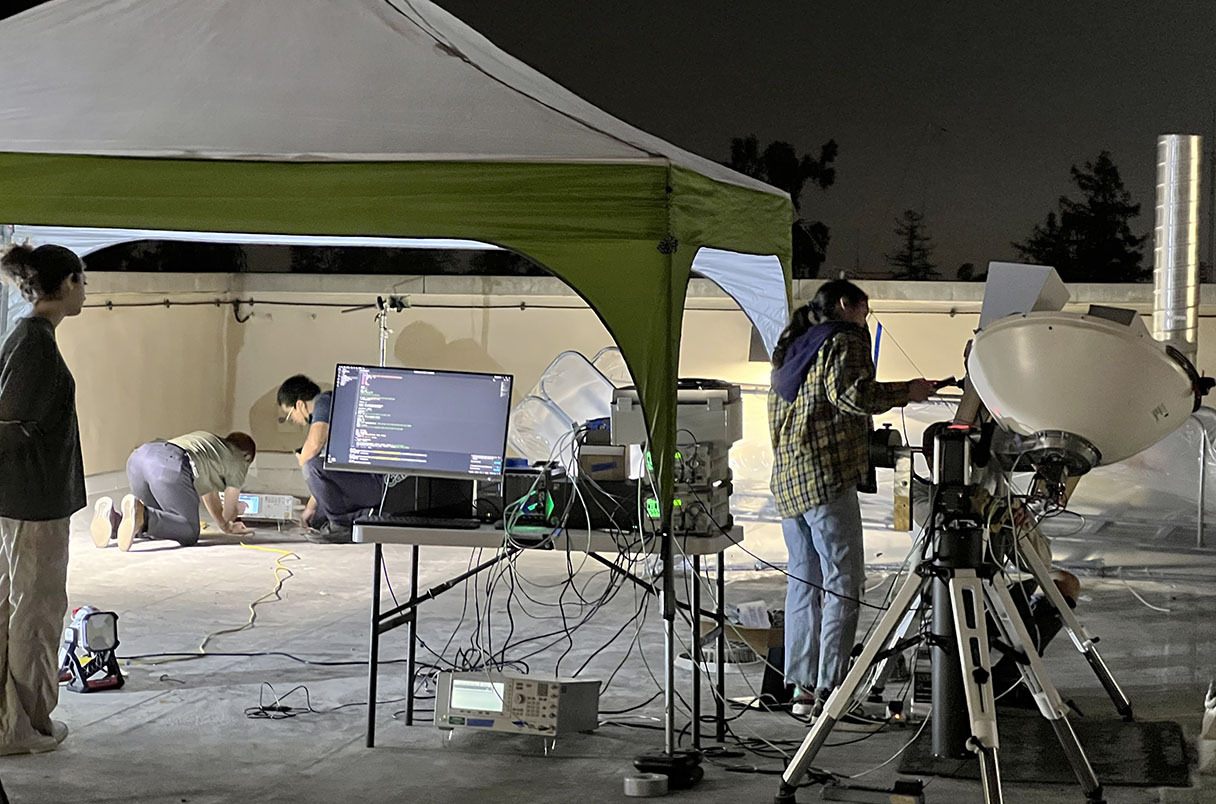8.06.2023
Experiment brings credibility to idea of space-based energy

Researchers at the California Institute of Technology detected tiny amounts of microwave power beamed from space.ALI HAJIMIRI/CALIFORNIA INSTITUTE OF TECHNOLOGY
Researchers have taken a small but necessary step toward realizing a long-standing dream: harvesting solar energy in space and beaming it down to Earth. A satellite launched in January has steered power in a microwave beam onto targets in space, and even sent some of that power to a detector on Earth, the experiment’s builder, the California Institute of Technology (Caltech), announced on 1 June. “No one has done this before,” says space scientist Sanjay Vijendran at the European Space Agency (ESA). “They’re bringing credibility to the topic by demonstrating this capability.”
Credibility has long been the challenge for space-based solar power. To produce as much power as a typical coal or nuclear power station, a satellite would need a collecting area kilometers across, requiring hundreds of launches and assembly in orbit. NASA planned a demonstration mission during the 1970s energy crisis. But with the technology of the time, carried aloft by the Space Shuttle and assembled by astronauts, the mission would have cost $1 trillion. Few took it seriously after that.
Space has changed since then. Solar cells and microwave beams are cheaper and more efficient. Robots capable of assembling structures will soon be in orbit, and companies such as SpaceX have slashed the cost of launches. Recent studies commissioned by ESA and the U.K. government suggest giant orbiting generators will soon be able to generate electricity at costs comparable to earthbound nuclear plants.
A few scattered research programs have nudged the field forward. Starting in the 1980s, researchers at Kyoto University demonstrated power beaming over short distances at the edge of space using suborbital rockets. In 2020, a team from the U.S. Naval Research Laboratory sent a pizza box–size “sandwich panel” into orbit with solar cells on one side, a filling of electronics, and microwave transmitters on the other side to demonstrate sunlight-to-microwave conversion.
The Caltech mission, funded by the Donald Bren Foundation and Northrop Grumman Corporation, aimed to go a step further with lightweight, inexpensive, and flexible components. The microwave transmitter was an array of 32 flat antennas packed onto a surface slightly larger than a dinner plate. By varying the timing of signals sent to the different antennas, the researchers could steer the array’s beam. They pointed it at a pair of microwave receivers about a forearm’s distance away and switched the beam from one receiver to the other at will, lighting up an LED on each.
The transmitted power was small, just 200 milliwatts, less than that of a cellphone camera light. But the team was still able to steer the beam toward Earth and detect it with a receiver at Caltech. “It was a proof of concept,” says Caltech electrical engineer Ali Hajimiri. “It indicates what an overall system can do.”
The Caltech spacecraft still has two more planned experiments. One is now testing 32 different varieties of solar cell to see which best survives the rigors of space. The second is a folded piece of ultralight composite material that will unfurl into a sail-like structure 2 meters across. Although the sail will not hold any solar cells, it is meant to test the kind of thin, flexible, and large deployments required for a future power station.
Interest in space-based solar power seems to be gathering momentum. ESA this year commissioned two studies into potential architectures for orbiting power stations. Vijendran says energy supply companies have joined the effort. The Kyoto team announced last month it would work with the Japanese space agency JAXA to test power beaming in orbit.
Kyoto electrical engineer Naoki Shinohara says he was pleased to hear of Caltech’s success, “but simultaneously I am disappointed because we, the Japanese, aimed to carry out the world’s first [wireless power transmission] satellite experiment in 2025.”
The startup company Virtus Solis Technologies has also been testing power beaming and plans to launch a pilot plant into orbit in 2026. CEO John Bucknell says the company intends to offer commercial power to customers before the end of the decade. “Space solar is the only clean, firm, scalable energy technology [with] a credible path to actual zero carbon emissions.”
Quelle: AAAS
